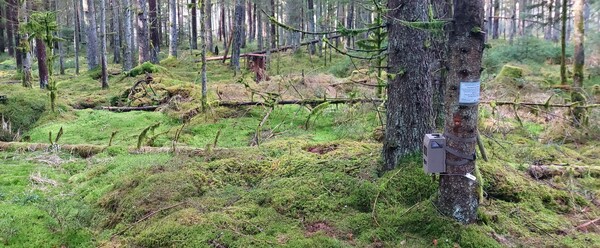The potential of AI and camera trapping in predicting human-wildlife interactions
2 Bayerische Landesanstalt für Wald und Forstwirtschaft
3 Lehrstuhl für Statistical Learning and Data Science, LMU München
O 2.3 in Animal Ecology in Action
09.10.2025, 12:00-12:15, H 36
As human presence in wildlife habitats grows, understanding its impact on animal behavior and spatio-temporal distribution becomes increasingly important. Wildlife camera trapping is a common method to study these interactions, but processing the vast amount of image data is time-consuming. We therefore explored active learning tools to enhance efficiency. We applied our approach to a five-year dataset from the Veldensteiner Forest, a temperate forest in southern Germany, comprising more than 2.5 million images from 200 camera trap locations. Initial detection of people, animals, and vehicles was performed using the open-source object detection model MegaDetector. For species-level classification, we trained our own AI model on ~250,000 images representing 13 wildlife and four domestic species. With manual revision of just 0.5% of the images, we found clear patterns: In the proximity of trails, the relative abundance of all hunted species was negatively correlated with human activity, whereas non-hunted species showed a positive correlation. During the hunting season (April–January), sensitivity of hunted species to human presence increased slightly. A high spatial overlap between wolves and their main prey, red deer, highlights the significant role of large carnivores in the system, which can interact with human impacts. Our work illustrates how AI can be effectively integrated into ecological practices, allowing for more efficient data processing and faster decision-making in wildlife management, forestry and conservation.
Keywords: artificial intelligence, camera traps, human-wildlife interactions, image classification
Export as iCal:



